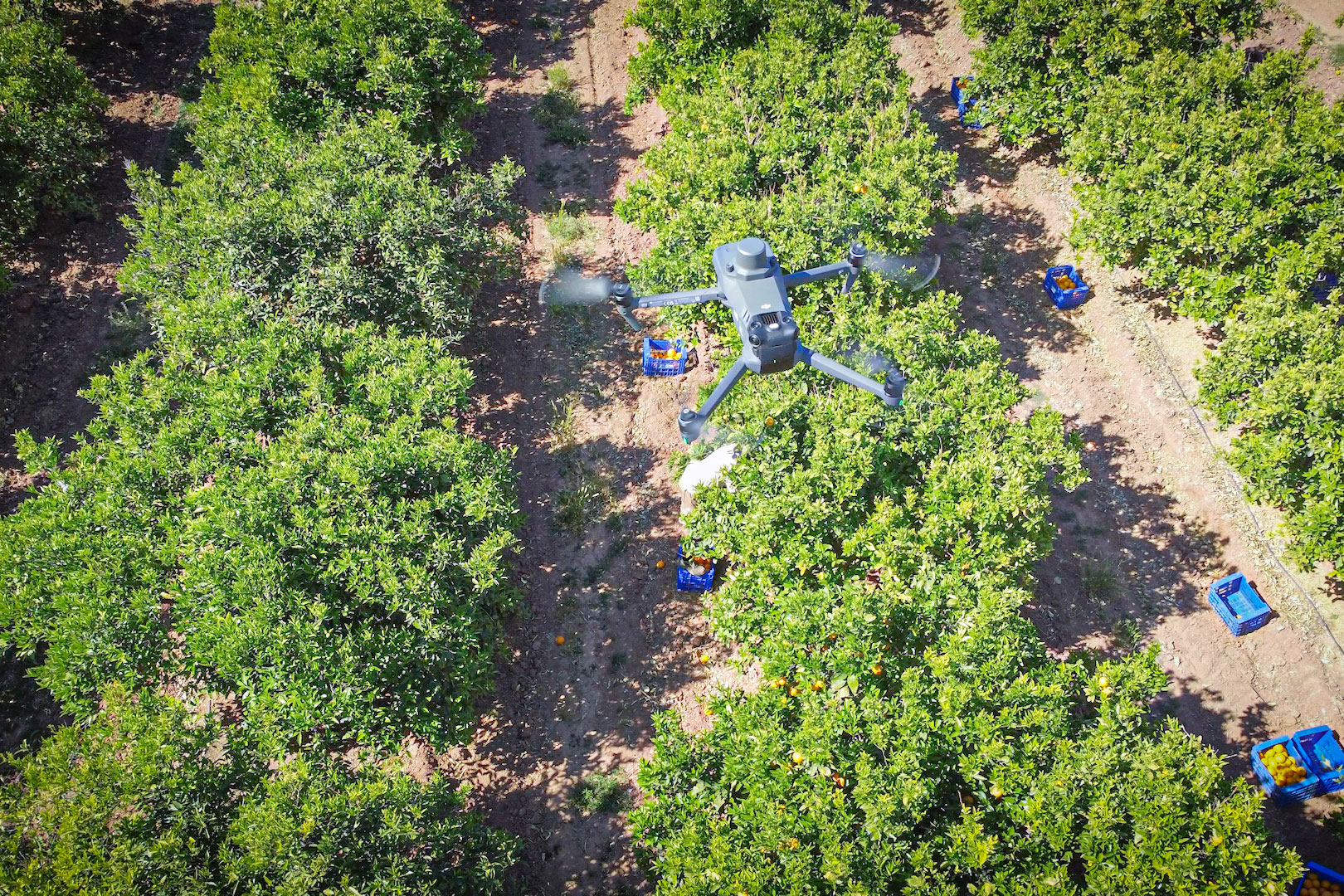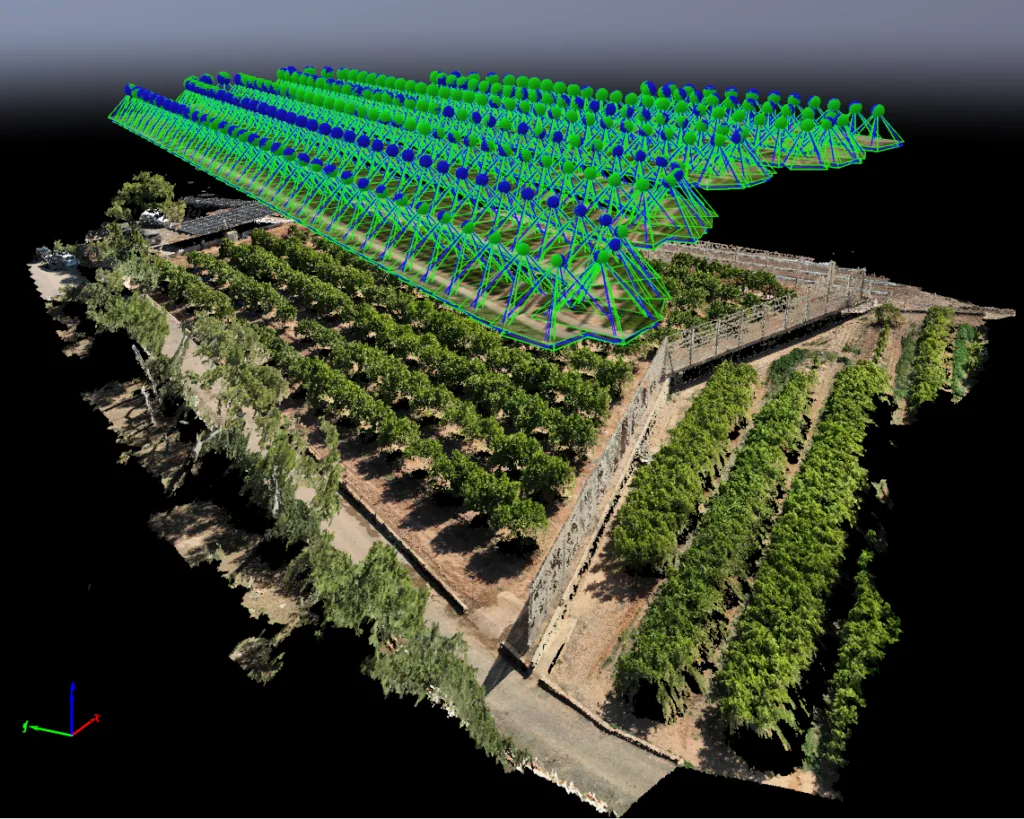The origin of precision agriculture dates back to the 1980s, when the first satellite navigation systems (GPS) began to be used in agricultural machinery. Over time, the incorporation of remote sensing technologies and cloud computing has enabled significant development of this practice. The evolution toward Agriculture 4.0 has accelerated in the last decade thanks to advances in artificial intelligence, the Internet of Things (IoT), and the use of drones and advanced sensors. These developments have facilitated access to real-time data and more precise, automated management of agricultural operations, highlighting the role of agriculture precision technology in modern farming.
What is Precision Agriculture Technology?
Precision agriculture technology , also known as Agriculture 4.0, is revolutionizing farm management by integrating advanced technologies to optimize production. This methodology uses data obtained through various technological tools, such as sensors, satellites, drones, and geographic information systems (GIS), to monitor and analyze soil conditions, climate, and crop status. The purpose is to minimize inputs, maximize yields, and reduce the environmental impact of agronomic practices by adapting them to the specific needs of each plot. Although the benefits are significant, the adoption of these technologies faces barriers such as cost and technical complexity.
Systems Used in Precision Agriculture
Precision agriculture technology relies on the coordinated use of technological tools that allow farmers to understand, interpret, and act on crop variability. The five main systems forming its operational base are described below:
- Global Positioning Systems (GPS and GNSS):
They allow precise location of plots, equipment, and agronomic operations. Their accuracy facilitates tasks such as guided sowing, linear tillage, or automated harvesting, reducing overlaps and errors. - Remote and proximal sensors:
Integrated into drones, satellites, or ground equipment, these sensors collect data on crop physiological status, soil moisture content, or the presence of stress. They are essential for anticipating needs and adjusting management decisions. - Geographic Information Systems (GIS):
They enable spatial analysis of collected data and represent field variability through thematic maps. This allows differentiated decision-making according to the characteristics of each area. - Variable Rate Technology (VRT):
Automates the localized application of inputs such as fertilizers, seeds, or pesticides, adjusting the dose to the specific conditions of each part of the field. This improves efficiency and reduces environmental impact. - Digital farm management platforms:
Specialized software that integrates data generated by different systems, facilitating the analysis and monitoring of agricultural tasks. Some tools incorporate artificial intelligence and predictive models to optimize production.
These five systems work complementarily, enabling more precise, efficient, and sustainable agronomic management, aligned with the innovation and resilience objectives of the agri-food sector.
Sensors for Precision Agriculture Tecnhology
The sensorization and connection of different data sources are key in this new environment. Agricultural machines are becoming increasingly intelligent, adapting to crop and environmental conditions, as well as to the farmer’s production requirements.
There is a growing trend toward developing new agricultural machinery that integrates innovative sensors with field equipment to adjust its performance intelligently and automatically to crop needs. This not only facilitates farmers’ work but also increases crop yields and, consequently, profitability.
Examples include sensors that evaluate crop leaf mass to adjust phytosanitary treatments, reducing waste and environmental impact, or those that measure fruit load and maturity to plan and optimize harvest. For this, both advanced sensors and the use of autonomous ground vehicles (robots), guided tractors, or aerial vehicles such as drones are essential. For instance, drones have been used in Japanese agriculture for more than a decade, and their use has recently become widespread due to their versatility and cost reduction.
The main expected benefits of using next-generation agricultural machinery are improved working conditions in the field and increased production quality.
Advantages of Precision Agriculture
Since precision agriculture refers to techniques aimed at optimizing the quality and quantity of agricultural production, its influence on the future of farming is unquestionable. The main advantages it offers include:
-
More efficient resource management: It allows more efficient use of resources such as water, fertilizers, and pesticides, reducing costs and minimizing environmental impact.
-
Improved productivity: Provides accurate data to support informed decision-making, optimizing farming practices and increasing yields.
-
Early detection of pests and diseases: Helps detect pests and diseases early, enabling timely intervention and reducing losses.
The collection of field data from sensors, combined with information on crop origin, treatments, or weather conditions uploaded to the cloud, allows the application of decision-support models that help improve crop performance, anticipate problems, and enhance farm profitability. A good example of this is found in the wine sector.
Vineyards must assess grape quality quickly, reliably, and objectively. To achieve this, control of the variables affecting grapes must begin in the production stages: monitoring fruit ripening, detecting diseases, planning harvests correctly, etc. Subsequently, quality must also be measured at winery intake. For this, different technologies are being used, such as refractometry, titration analyzers, multiparametric analyzers, infrared spectrophotometers, and biosensors.
Barriers Hindering the Adoption of Precision Agriculture
Despite its advantages, several barriers hinder the adoption of precision agriculture, as confirmed during sectoral analysis with partner companies:
-
Technology implementation cost: One of the main limitations is the cost of implementing these technologies. Advanced equipment and systems, such as drones, high-precision sensors, and data analysis platforms, can be prohibitively expensive, representing an unjustified cost for many small and medium-sized farms.
-
Technical complexity: The technical complexity of many of these technologies requires specialized training. This can be a challenge for farmers and field technicians who lack prior knowledge in these areas or are reluctant to change traditional work methods, especially if they are not familiar with digital devices and advanced management systems. The lack of accessible and effective training programs can aggravate this issue, making it difficult to transition toward more technological and efficient practices.
Three Ways to Overcome Barriers to Precision Agriculture
To overcome these difficulties, AINIA is working on the AGRISME project, which develops and applies innovative technologies such as satellite imagery, low-cost remote sensing systems, and the creation of an integrated data space. With this aim, AGRISME has focused on three main approaches:
-
Access and retrieval of satellite images from open-access databases: Accessing and retrieving satellite images from open and free databases such as Sentinel 1–6 satellites, included in the European Union’s Copernicus Earth Observation Program.
-
Development of a low-cost remote sensing system: Setting up a low-cost remote sensing system based on a multispectral camera integrated into a drone, to characterize trees and extract agronomic indices from plots efficiently, using less time and fewer resources.
-
Design of a data space: Creating a data space to store, analyze, and share information from not only the above sources but also other datasets currently used by farmers and field technicians.
The project aims to leverage the 2024/2025 campaign to advance the integration of selected technologies and create the AGRISME digital toolbox. The goal is to demonstrate the transformative capacity of precision agriculture practices in a sector of particular importance in the Valencian Community: citrus farming.
This project is supported by the Department of Innovation, Industry, Commerce and Tourism of the Generalitat Valenciana, through IVACE, and funded by the European Union via the ERDF Valencian Community 2021–2027 Program.






